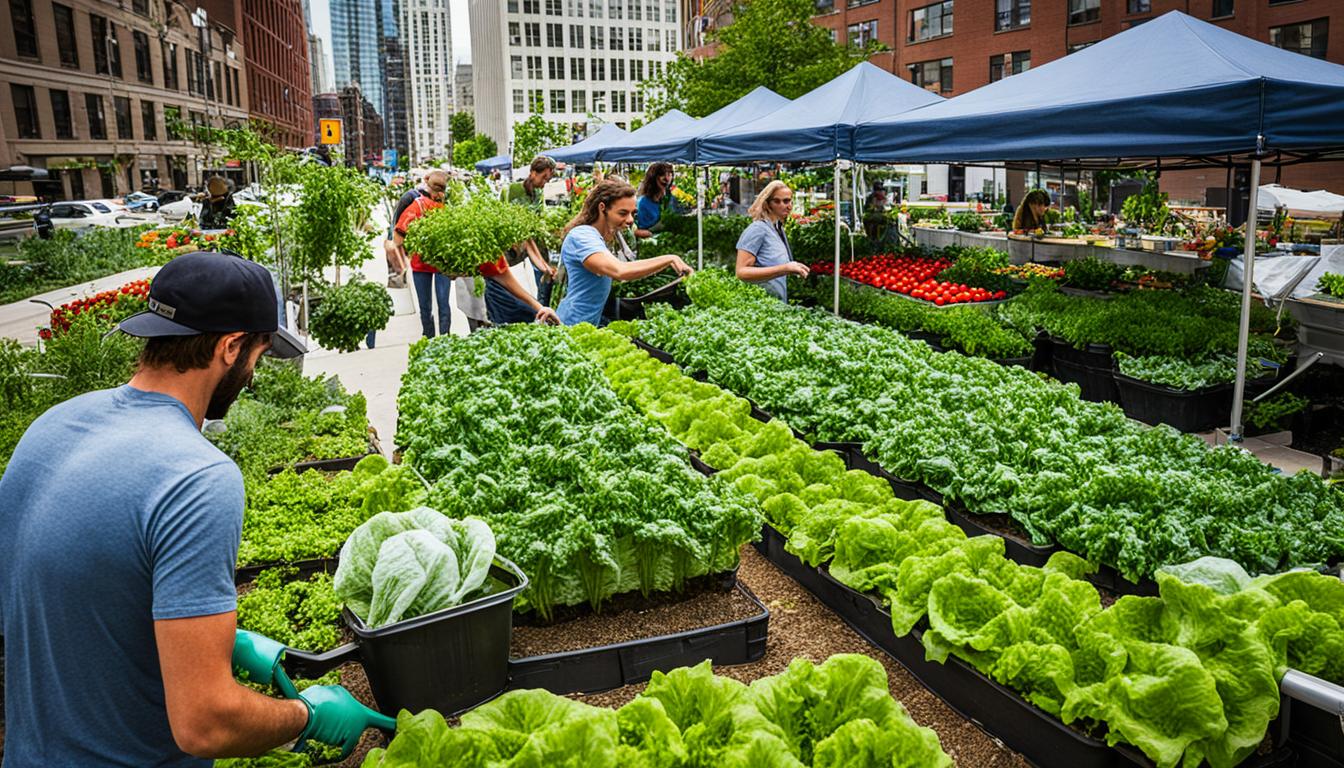Urban farming has become a key solution for city dwellers. It allows you to cultivate fresh, nutritious food in your urban setting. Even with limited space, such as a small apartment or a tiny backyard, you can engage in sustainable agriculture. This approach helps you maximize your space while contributing to a greener future.
Urban farming is gaining traction, especially in densely populated areas. It offers a way to enhance food security and minimize waste. By adopting innovative methods like aquaponics and vertical farming, you can produce local food efficiently. This movement connects you with a community that values education and a direct link to their food sources.
When venturing into urban farming, pay attention to your surroundings. Consider transforming rooftops or unused containers into thriving gardens. Quick-growing crops like microgreens and mushrooms allow you to enjoy the fruits of your labor swiftly. This not only benefits your health but also sets a positive example for your loved ones.
Key Takeaways
- Urban farming enhances food security and fosters community involvement.
- Minimal land space is required to start your urban farming journey.
- Aquaponics systems significantly reduce water usage compared to conventional farming.
- Rooftop gardens optimize the use of space in densely populated areas.
- Quick-growing crops like microgreens are perfect for urban environments.
- Collaboration among urban farms boosts sustainability through shared resources.
- Accessing locally grown produce benefits economically disadvantaged communities.
Introduction to Urban Farming
Urban farming offers a unique chance for city dwellers to grow food in innovative spots. It allows people to turn balconies, rooftops, and community lots into gardens. This shift highlights that agriculture isn’t just for rural areas; it thrives in cities too.
Interest in urban farming is growing for many reasons. People want healthier food, lower grocery bills, and better urban sustainability. By joining local food systems, city folks can get fresh produce and connect more with their food. Urban farming is a key to food security, especially in areas with limited access to fresh food.
Urban agriculture supports about one billion people worldwide, showing its vast potential. It not only meets food needs but also boosts social unity, economic growth, and environmental health.
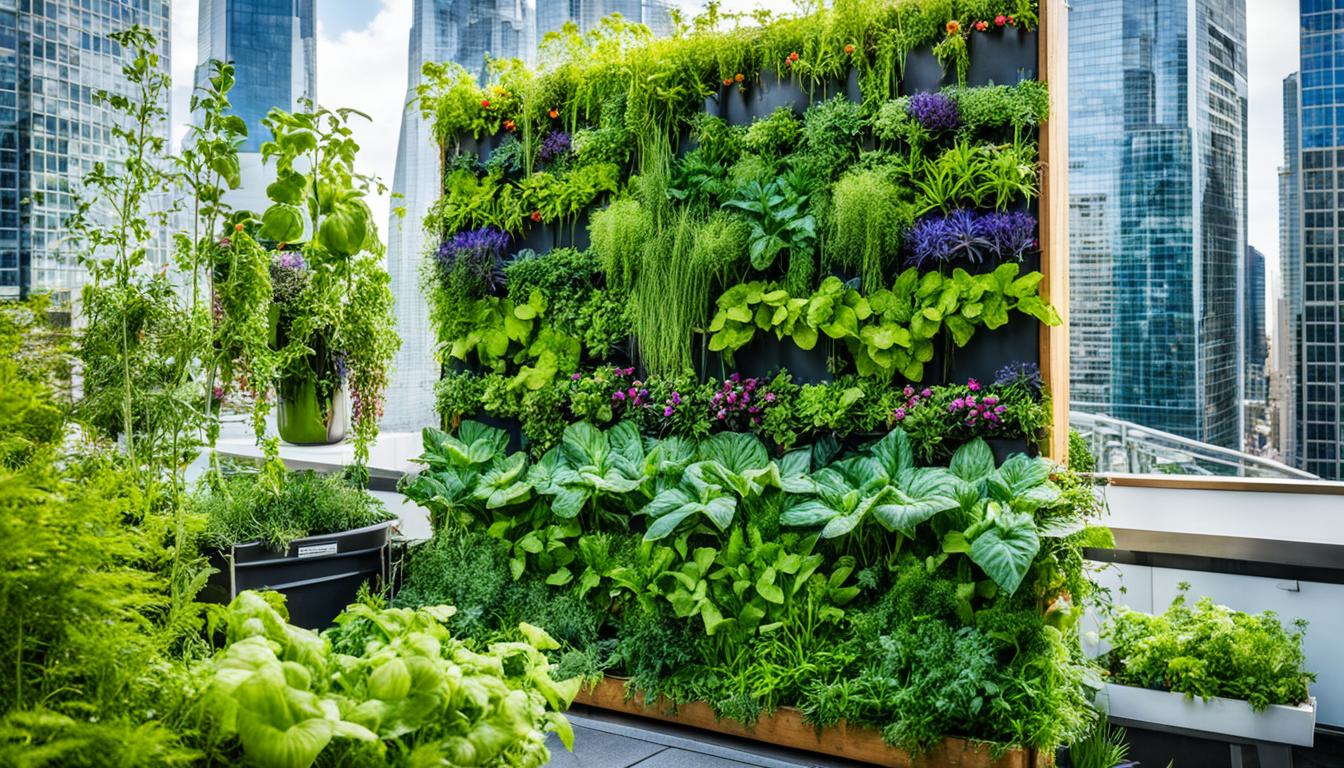
The Benefits of Urban Farming
Urban farming brings significant advantages, reshaping communities and improving life quality. It enhances access to fresh produce, playing a crucial role in *food security*. Over 20% of the world’s food comes from city farms, offering a sustainable way for local food production.
Urban farming also reduces the *environmental impact* of traditional farming. It cuts down on transportation distances, leading to a reduction in food miles. This decrease in carbon emissions benefits both the environment and public health.
Engaging in urban farming strengthens community ties. Neighbors collaborating in gardens boosts social cohesion, enhancing neighborhood safety and pride. The presence of green spaces beautifies cities, which can also lead to economic gains, increasing property values by up to 9.4% over five years.
By leveraging the urban farming benefits, cities can address food insecurity, affecting about 13% of Americans. Urban agriculture not only provides fresh, nutritious food but also fosters education. It highlights the importance of nutrition and sustainability.

Container Gardening: Maximizing Small Spaces
Container gardening is a prime solution for urban dwellers. With over 80% of Americans living in cities, cultivating plants in limited spaces is vital. This method not only enables you to grow fresh produce but also supports sustainable living. It’s essential to know your container options and the plants that excel in them before you start.
Choosing the Right Containers
Selecting the right containers is key to maximizing small spaces. Consider using biodegradable pots, old crates, or repurposed paint cans. Each container type offers unique advantages. Make sure they have drainage holes to prevent waterlogged soil and root rot. The size of the container matters; larger ones help with moisture regulation. Using materials from home cuts costs and allows for creative gardening solutions. For more advice, visit urban gardening techniques tailored to your needs.
Plants that Thrive in Containers
Many vegetables and herbs are well-suited for container gardening, even for tiny balconies or patios. Shallow-rooted plants like lettuce, radishes, and herbs do well in small pots. For deeper containers, tomatoes and peppers need about 12-15 gallons of soil. Dwarf fruit trees are also great for small spaces, creating lush green spots in cities. Choose plants that fit your climate by considering light and heat levels. This approach helps avoid challenges and boosts growth. Growing your own food can save you money, especially on expensive items like herbs and specialty vegetables.
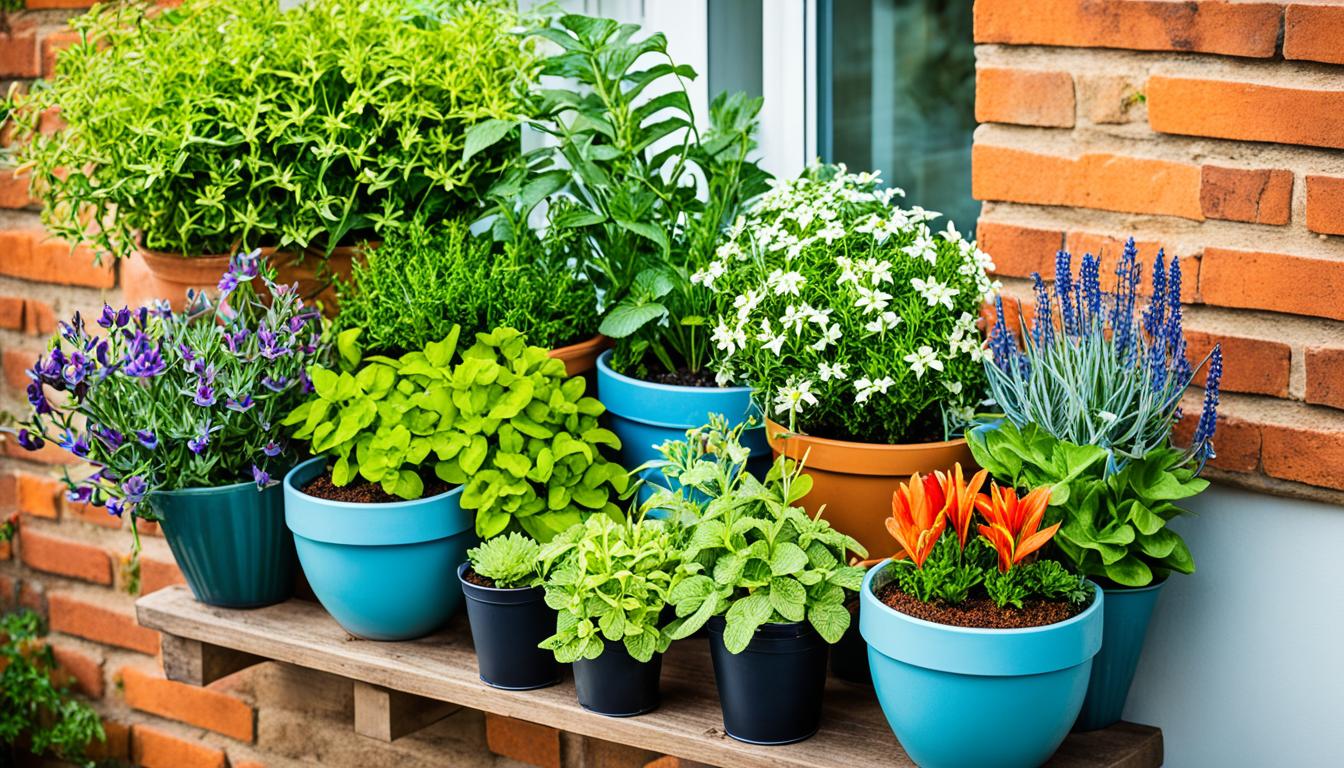
Vertical Gardening for Limited Space
Vertical gardening offers a groundbreaking approach for those dealing with limited urban spaces. It employs efficient plant arrangements to turn small areas into lush green spaces. These gardens can flourish on walls, balconies, or in tight indoor spaces, making the most of every inch.
Techniques for Vertical Growing
Several techniques can boost your vertical gardening in space-saving ways. Wall-mounted planters not only save floor space but also display your plants elegantly. Trellises or arbors support climbing plants like beans and peas, adding beauty and productivity to your space. Tower gardens are another excellent choice, stacking planters to maximize space while offering a sturdy base for your plants.
Best Plants for Vertical Gardens
Choosing the right plants is key to a thriving vertical garden. Climbing plants such as cucumbers, pole beans, and tomatoes grow upwards naturally. Compact herbs like basil and mint flourish in vertical gardens, adding freshness to your kitchen. Leafy greens, including spinach and kale, can yield a generous harvest in limited space. Select plants that grow vertically to make the most of your space.

Community Gardens and Urban Agriculture
Community gardens foster a dynamic social community, building connections among neighbors and encouraging teamwork in cities. These spaces offer plots for individuals to cultivate food together, enriching local food systems. They not only boost food equity but also enhance food security. Participants learn about sustainable farming through workshops and shared activities.
Urban agriculture is vital as climate change highlights the need for sustainable food sources. By growing food near cities, community gardens cut down on the carbon emissions from food transport. The New York State Community Gardens Soil Testing Program, with its $40,000 for soil tests, shows how local funds back these efforts. It aims for safe, productive soil, encouraging more people to farm in the city.
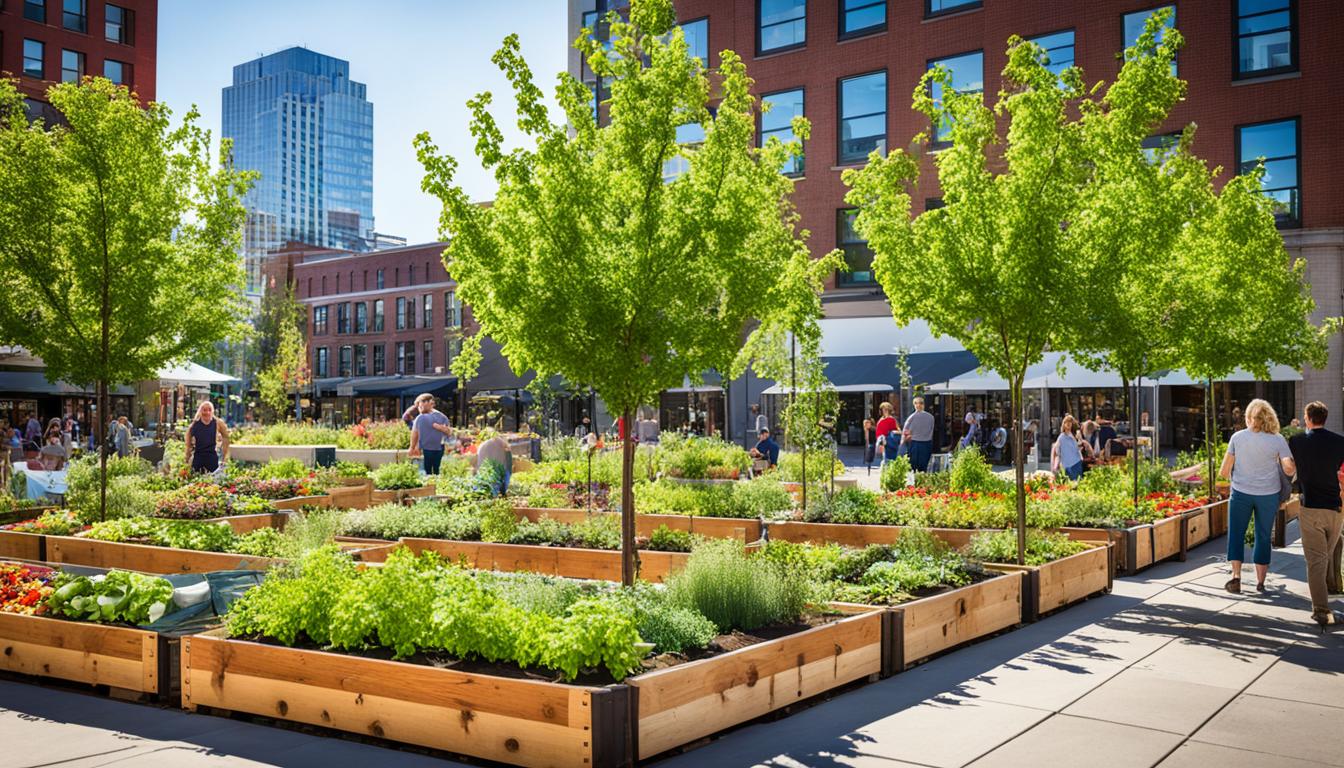
The Urban Agriculture Stakeholder Meeting, co-hosted with Cornell Cooperative Extension, underscores the need for policy support for urban farming. These meetings offer insights into community needs and spark new farming ideas. Schools and hospitals now see the benefits of institutional farms and gardens, linking education with sustainable farming.
Starting in urban agriculture is welcoming, with easy entry into community garden projects. You can help by volunteering or getting resources, making a real impact in your area. Buying produce from local farmers strengthens social community bonds and supports food equity and sustainability.
For those keen on seasonal produce and local eating, explore this resource to enhance your community’s efforts.
Utilizing Rooftop Gardening
Rooftop gardening transforms underutilized urban space into lush green areas. It’s becoming popular in cities where traditional farming is limited by land. Cities benefit from rooftop gardens by reducing urban heat and enhancing air quality. By using effective strategies, you can create a sustainable and productive rooftop garden.
Choosing the Right Roof Space
Start by evaluating if your building can support rooftop gardening. A structural assessment is crucial to ensure the roof can handle the weight of soil and plants. Rooftop gardens need about 6 hours of sunlight for optimal growth. Look for locations with sufficient sunlight and easy access to water. Opt for lightweight gardening solutions like modular systems or tray gardens to minimize load and maximize garden potential.
Weather Considerations for Rooftop Gardening
Urban rooftop gardens face unique weather challenges due to their elevation and exposure. Extreme temperatures and wind can dry out plants quickly. Use larger containers to help retain moisture. Shade structures protect plants during peak sunlight hours. Windbreaks like fencing or strategically placed plants shield delicate crops. In colder months, mulching protects your plants from harsh winter conditions. By following these tips, your rooftop garden can flourish despite unpredictable urban weather.
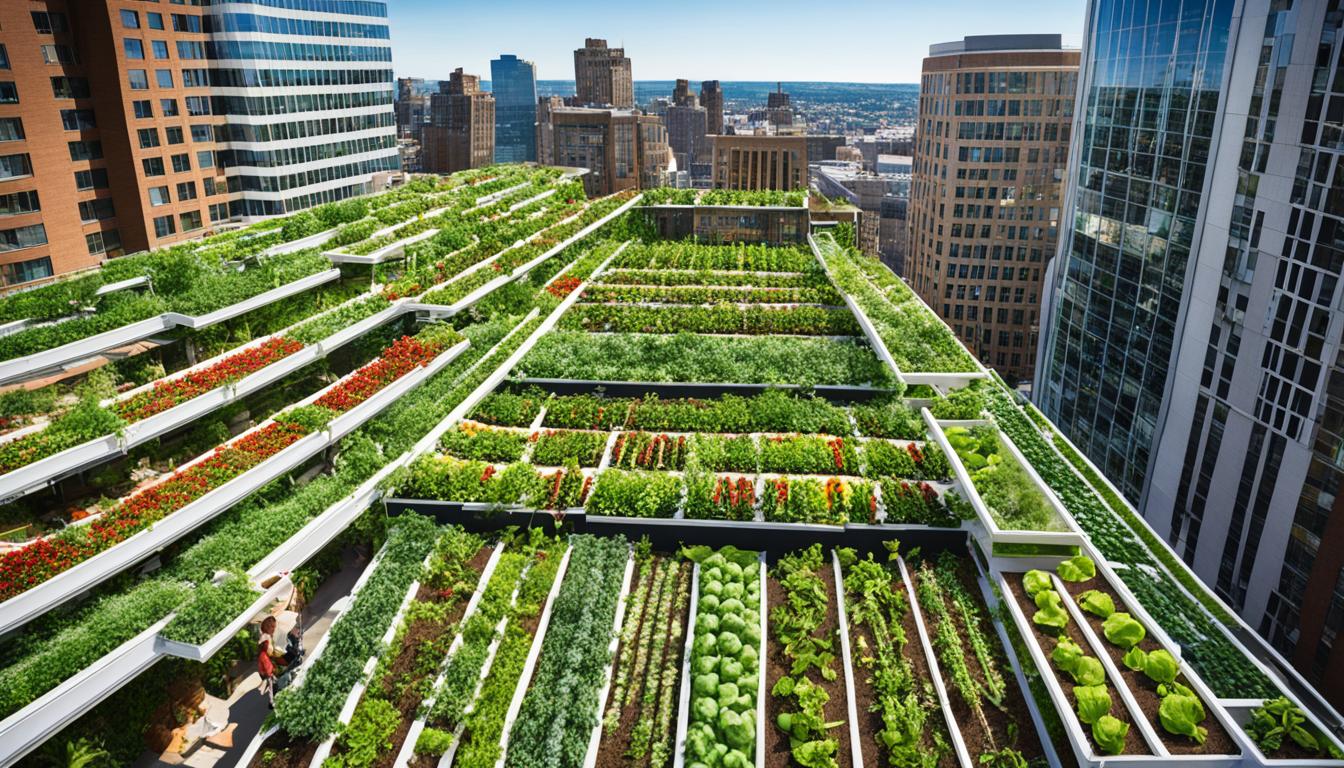
Sustainable Practices in Urban Farming
Sustainable agriculture is crucial for turning urban areas into thriving green spaces. By embracing eco-friendly practices, you can enhance your urban farming methods and support environmental health. Techniques like crop rotation and organic pest control improve soil health and create a diverse ecosystem in your own backyard.
Installing rainwater collection systems for irrigation is a smart move, utilizing every drop to feed your plants. This method not only saves water but also ensures your garden gets a steady supply of natural hydration. Adding compost to your garden is equally important, enriching the soil with nutrients that help your crops grow strong. This approach to sustainability reduces waste and creates a healthier environment.
Choosing native plants boosts biodiversity in urban areas. These plants are well-suited to local conditions, needing less water and supporting ecosystem health. Companion planting is another effective strategy, where certain plants help each other grow. This method shows how different crops can work together, creating a balanced and sustainable urban farm.
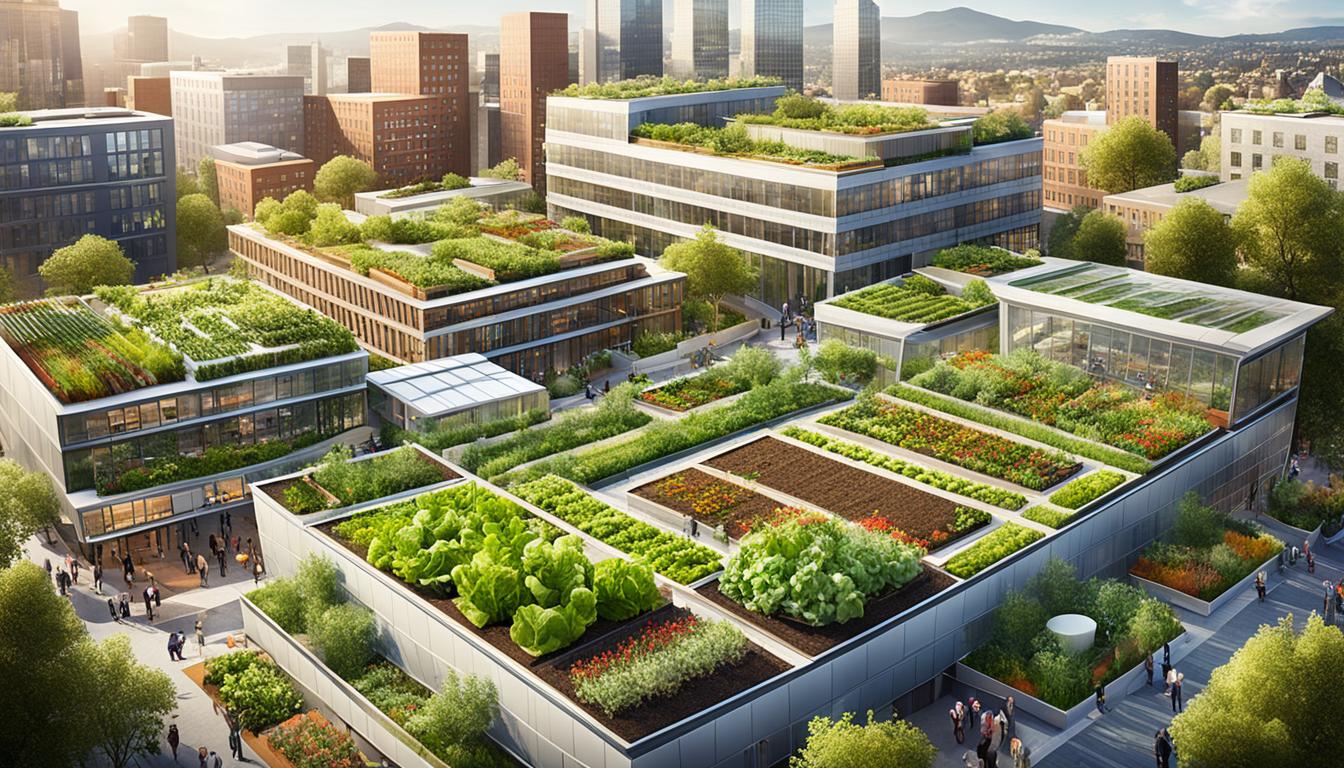
Incorporating Permaculture Principles
Adopting permaculture principles is crucial for those aiming to create a sustainable garden. This method aims to build a self-sustaining garden that blends seamlessly with nature. Techniques like companion planting and polycultures boost biodiversity and improve soil health. Swales are also effective in managing water, creating an ideal environment for plant growth.
Create a Self-Sustaining Garden
Designing a self-sustaining garden cuts down on external resource use and builds a resilient ecosystem. By integrating diverse plant species, you encourage mutual support and increase productivity. These strategies enhance your urban farming efficiency, ensuring your garden thrives through natural interactions and waste cycling.
Benefits of Composting
Composting is essential for sustainable gardening, allowing you to turn organic waste into nutrient-rich soil. By composting food scraps and yard waste, you lessen landfill contributions and enrich your garden’s soil. A balanced mix of green (nitrogen-rich) and brown (carbon-rich) materials makes for effective composting. This supports healthy plant growth, completing the cycle of your garden’s ecosystem.
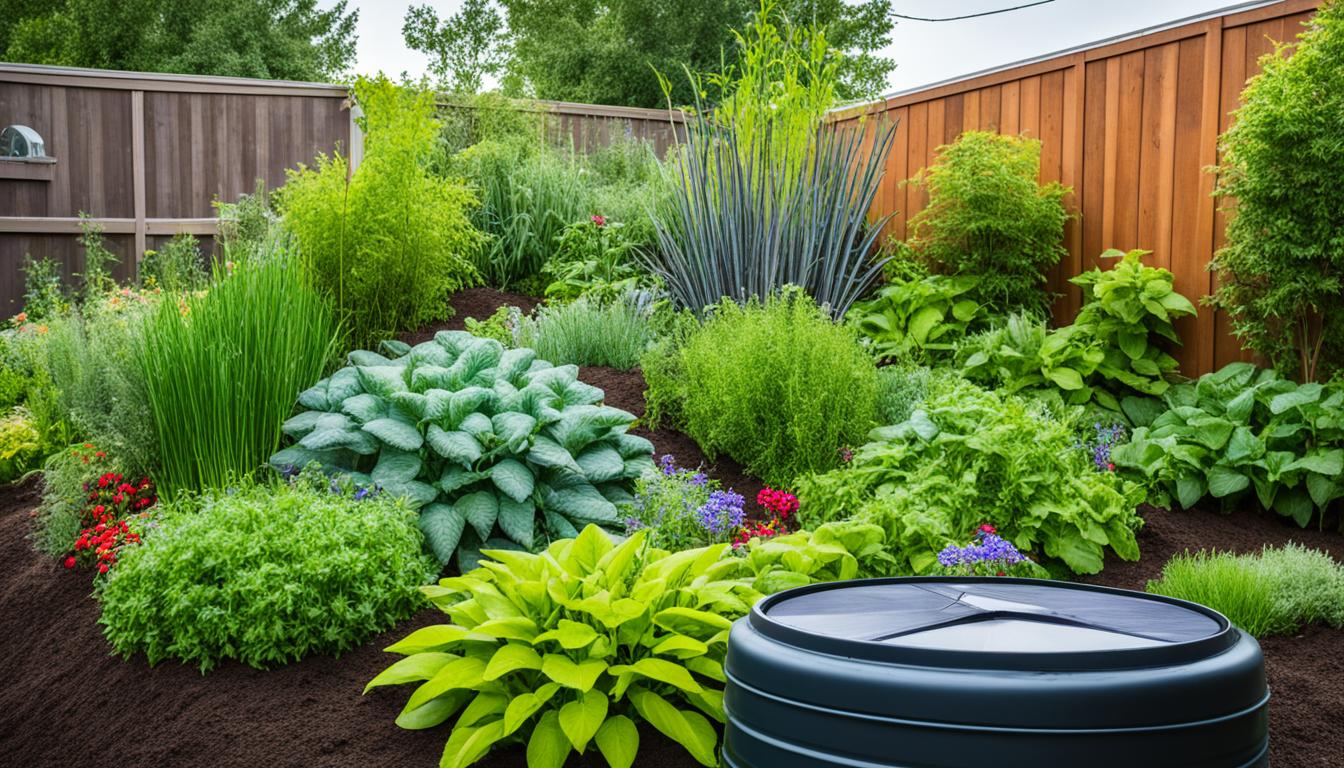
Conclusion
Urban farming stands as a critical response to the urbanization challenges. With a projected 68% of the population living in cities by 2050, it’s essential to adopt sustainable living through urban agriculture. This approach can significantly boost local food production and foster community engagement. By using innovative methods like container and vertical gardening, you can turn your space into a thriving garden. This garden will greatly enhance your neighborhood’s food security.
Urban farming’s benefits go beyond personal gains. It builds community, promotes collaboration among city residents, and improves local ecosystems. However, it’s crucial to be mindful of potential issues like soil contamination and excessive fertilizer use. Responsible practices can help overcome these challenges. With 67,032 vacant parcels in cities like Phoenix ready for farming, the potential for urban agriculture growth is vast.
By embracing this movement, you’re not just improving your diet with fresh produce. You’re also supporting a community effort towards sustainability. Your efforts in urban farming are not just about growing plants. They’re about creating a healthier, more resilient environment for all.
FAQ
What is urban farming?
How does container gardening work?
What are the benefits of community gardens?
How do I start a rooftop garden?
What types of plants are best for vertical gardening?
What sustainable practices can I incorporate into urban farming?
How can I contribute to food security through urban farming?
What is permaculture, and how does it relate to urban gardening?
Source Links
- Urban Farming Ultimate Guide and Examples | GroCycle – https://grocycle.com/urban-farming/
- What Is Urban Farming? – https://www.thespruceeats.com/what-is-urban-farming-5188341
- PDF – https://ruaf.org/assets/2019/11/Module-1-Introduction-into-urban-agriculture-concept-and-types.pdf
- Urban Agriculture – an overview – https://www.sciencedirect.com/topics/agricultural-and-biological-sciences/urban-agriculture
- 29 Surprising Benefits Of Urban Farming – https://www.urbanvine.co/blog/urban-farming-benefits
- FCS3378/FY1517: Social and Community Benefits and Limitations of Urban Agriculture – https://edis.ifas.ufl.edu/publication/FY1517
- Urban Agriculture | USDA Climate Hubs – http://www.climatehubs.usda.gov/hubs/international/topic/urban-agriculture
- Container Gardening for the Urban Farmer – https://www.willystreet.coop/pages/container-gardening-for-the-urban-farmer
- How Does Your Garden Grow? Urban Gardening Strategies for Small Spaces – https://www.krain.com/blog/urban-gardening-small-spaces
- Maximizing Space: The Benefits of Vertical Gardening — Roobeez – https://www.roobeez.com/blog/vertical-gardening
- Vertical Farming: Everything You Need to Know | Eden Green – https://www.edengreen.com/blog-collection/what-is-vertical-farming
- Vertical farming – the future concept of agriculture – https://www.hausvoneden.com/urban-living/urban-gardening-vertical-farming-two-future-concepts/
- Community Gardens and Urban Agriculture – https://agriculture.ny.gov/community-gardens-and-urban-agriculture
- What Is Urban Farming? – https://unity.edu/careers/what-is-urban-farming/
- Rooftop Gardening and Urban Farming Solutions – BFPM – https://bfpminc.com/rooftop-gardening-urban-farming-what-you-need-to-know/
- Frontiers | Urban Rooftop Agriculture: Challenges to Science and Practice – https://www.frontiersin.org/journals/sustainable-food-systems/articles/10.3389/fsufs.2020.00076/full
- How urban farming makes cities more resilient, sustainable – https://www.insnet.org/urban-farming-makes-cities-resilient-sustainable/
- How Can We Make Urban Agriculture More Sustainable? – https://www.agritecture.com/blog/how-can-we-make-urban-agriculture-more-sustainable
- Best Practices for the Sustainable Urban Farm – https://www.sare.org/resources/best-practices-for-the-sustainable-urban-farm/
- Two Examples: Using Permaculture in City Spaces with Urban Food Forests – https://www.tenthacrefarm.com/urban-food-forests/
- The Ultimate Guide to Permaculture in Urban Development – https://seeds-for-sustainability.com/en/the-ultimate-guide-to-permaculture-in-urban-development/
- Getting to Fair Share with Town and City Permaculture | Edible East Bay – https://edibleeastbay.com/2020/11/11/getting-to-fair-share-with-town-and-city-permaculture/
- Frontiers | Consumers’ Perception of Urban Farming—An Exploratory Study – https://www.frontiersin.org/journals/sustainable-food-systems/articles/10.3389/fsufs.2020.00079/full
- Urban Farming: Beneficial or Detrimental? – https://www.projectplanetid.com/post/urban-farming-beneficial-or-detrimental

